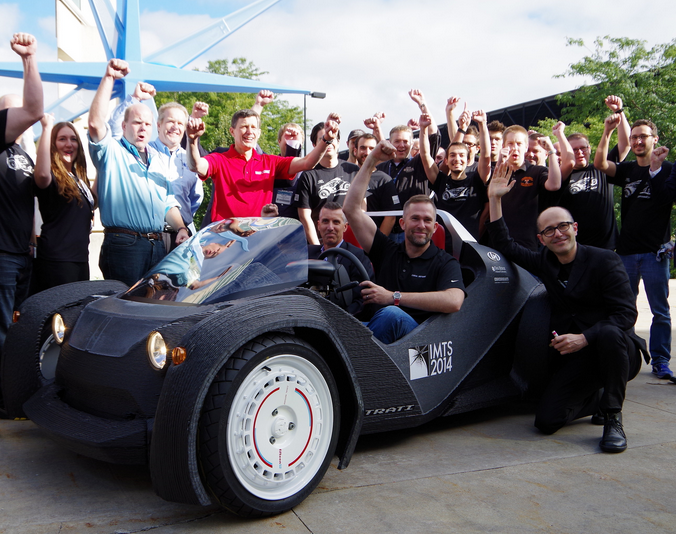World’s First 3D-printed Car from Local Motors
Local Motors has 3D printed, assembled and debuted the world’s first 3D-printed car – live from the show floor at the 2015 North American International Auto Show (NAIAS).
Called the Strati, the vehicle is the first in a line of 3D-printed cars from Local Motors. The design was chosen in May 2014 from more than 200 submitted to Local Motors by the company’s online co-creation community after launching a call for entries.
The winning design was submitted by Michele Anoè who was awarded a cash prize plus the opportunity to see his design brought to life.
Less than a year after the original design was chosen, Local Motors will premiere a mid-model refresh, which began its inaugural print on Monday, January 12 on the show floor during NAIAS.
“Since launching in 2007, we have continuously disrupted the way vehicles are designed, built, and sold,” said Local Motors Co-founder and CEO John B. Rogers, Jr. “We paired micro-manufacturing with co-creation to bring vehicles to market at unprecedented speed.”
“We proved that an online community of innovators can change the way vehicles go from designed to driven,” he added.
The first phase in 3D-printed manufacturing is additive. Made from a carbon fiber reinforced thermoplastic material by SABIC, the current model of the Strati takes approximately 44 hours to print 212 layers. The end result is a completed 3D-printed Car Structure™.
The second phase of 3D-printed manufacturing is subtractive. Once 3D printing is complete, the 3D-printed Car Structure moves to a Thermwood CNC router that mills the finer details. After a few hours of milling, the Strati’s exterior details take shape.
The last phase of 3D-printed manufacturing is rapid assembly. After the 3D-printed Car Structure is printed and refined, the non 3D-printed components, including the drivetrain, electrical components, gauges and wiring, plus the tires are added.
A vinyl wrapping, paint or other surface treatment is used to complement the 3D-printed texture, resulting in a showroom-ready vehicle. “Gone are the days of an economy of scale in order to introduce and commercialize a technology,” said Rogers. “Micro-factories are a great counterpoint because they employ an economy of scope by taking advantage of low cost tooling and co-creation, resulting in the ability to get products to market faster and in less time while using less capital to find a winning concept.”
What’s more, a micro-factory, which is typically located within 100 miles of major urban centers, creates more than 100+ local jobs, reduces freight and distribution costs by 97%, increases recycling and reduces waste while speeding delivery time to market.
Category: Uncategorized, Vehicle News













